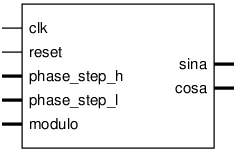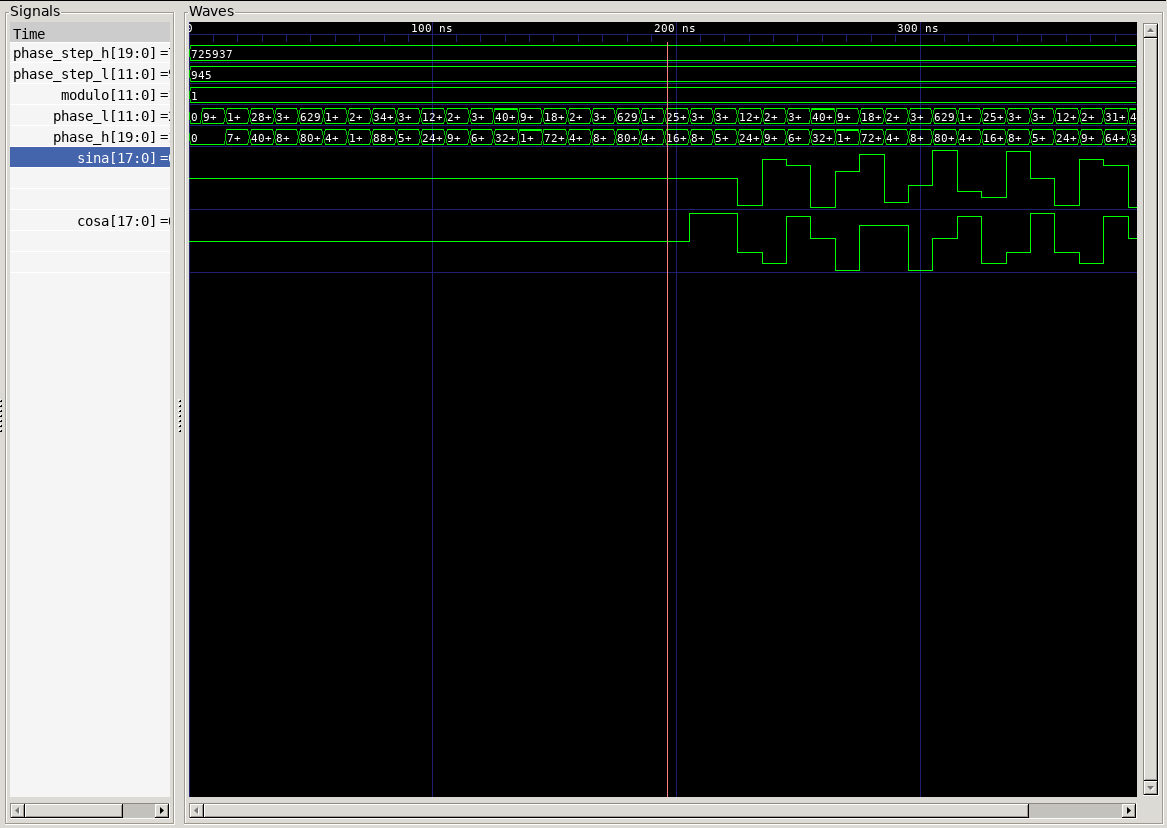Attention
This documentation is a work in progress. Expect to see errors and unfinished things.
rot_dds
Description
Phase Rotating Direct Digital Synthesis of sin/cos
18 bit output coming from cordicg
Note that phase_step_h and phase_step_l combined fit in a 32-bit word.
This is intentional, to allow atomic updates of the two controls
in 32-bit systems. Indeed, when modulo==0, those 32 bits can be considered
a simple fast binary DDS control for quirky (non-binary-rounding) phase
steps like:
7/33 for LCLS-II
8/11 for SSRF
9/13 for Argonne RIA
Synthesizes to ??? slices at ??? MHz in XC3Sxxx-4 using XST-??
Pinout

Parameters
Name |
Min |
Max |
Default |
Description |
|---|---|---|---|---|
lo_amp |
? |
? |
18 |
Ports
Signal |
Direction |
Description |
|---|---|---|
clk |
Input |
timespec 9.0 ns |
reset |
Input |
active high, synchronous with clk |
sina[17:0] |
Output |
|
cosa[17:0] |
Output |
|
phase_step_h[19:0] |
Input |
|
phase_step_l[11:0] |
Input |
|
modulo[11:0] |
Input |
Implementation and use
The portable Verilog implementation can be found in rot_dds Source File
Timing Diagram
A GTKWave-generated timing diagram is shown below:
